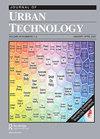基础设施的想象力
IF 4.6
3区 经济学
Q1 URBAN STUDIES
引用次数: 8
摘要
在《分裂的城市主义》一书中,斯蒂芬·格雷厄姆和西蒙·马文指出,传统的表征范式在捕捉包含当代城市空间的庞大网络系统方面存在不足。在他们的后记中,他们明确提出了这一主张,写道需要一种新的“空间想象”来“支持解决和研究分裂城市的挑战”。在这篇评论中,我探讨了这一挑衅,问谁和什么想象基础设施?一个进步的基础设施想象是由什么组成的?这种想象是如何产生的呢?本文章由计算机程序翻译,如有差异,请以英文原文为准。
The Infrastructural Imagination
ABSTRACT Throughout Splintering Urbanism, Stephen Graham and Simon Marvin draw attention to the inadequacy of conventional representational paradigms for capturing the vast networked systems comprising contemporary urban space. In their postscript, they make this claim explicit, writing that a new “spatial imaginary” is required “to support the challenges of addressing and researching splintering cities.” In this commentary, I explore this provocation, asking who and what imagines infrastructure? Of what does a progressive infrastructural imaginary consist? And how might such an imaginary be brought about?
求助全文
通过发布文献求助,成功后即可免费获取论文全文。
去求助
来源期刊

Journal of Urban Technology
URBAN STUDIES-
CiteScore
8.50
自引率
4.20%
发文量
42
期刊介绍:
The Journal of Urban Technology publishes articles that review and analyze developments in urban technologies as well as articles that study the history and the political, economic, environmental, social, esthetic, and ethical effects of those technologies. The goal of the journal is, through education and discussion, to maximize the positive and minimize the adverse effects of technology on cities. The journal"s mission is to open a conversation between specialists and non-specialists (or among practitioners of different specialities) and is designed for both scholars and a general audience whose businesses, occupations, professions, or studies require that they become aware of the effects of new technologies on urban environments.
 求助内容:
求助内容: 应助结果提醒方式:
应助结果提醒方式:


